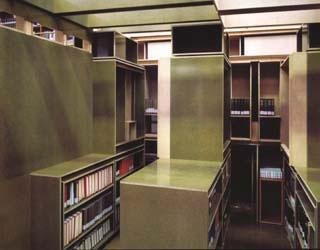Jan De Cock
dal 6/3/2008 al 8/4/2008
Segnalato da
6/3/2008
Jan De Cock
Galerie Fons Welters, Amsterdam
Solo show. 4 different spaces, each of which separately - and all of them together - constitutes a sculpture. Hanging in each space are different frames with photos and collages combined with different modules, sculptures of different sizes.

The work of Jan De Cock (1976) breathes modernism in and breathes modernism out. It cannot be detached from the tradition of modern art, nor does it claim to do anything other than what a work of modern art tries to do. De Cock has a keen eye, is aware of his position within the history of art, and while showing the greatest respect for earlier artists, nonetheless tries surreptitiously to surpass them.
The work Jan de Cock, Galerie Fons Welters, Amsterdam, 2008 consists of four different spaces, each of which separately – and all of them together – constitutes a sculpture. Hanging in each space are different frames with photos and collages combined with different modules, sculptures of different sizes. Each of these outer frames has a different shape and reference. They contain photographs of artworks – including De Cock’s own work – and inspiring locations and images. The photos act like film stills, with each one revealing a different possible approach to the installation. All this taken together forms a rhythmic whole that can be seen as a sculpture: a ‘Denkmal’.
The architectural constructions produced by Jan De Cock, simple wooden boards transformed into unique structures that work in, and sometimes with, the space, have been elevated to new heights in his most recent work. The spatial images are now composed of framed photos, collages and independent sculptures. He uses these same elements in the exhibition Denkmal 11, Museum of Modern Art, 11 West 53rd Street, New York, 2008, currently on show at the MoMA. Here, the main emphasis is on photos of different parts of the museum and major works of art from their collection. In this way he tries to capture his view of the museum in a single form, but at the same time he also sets out a path for the spectator’s gaze, which he guides like a film along the rhythmic blocks of his structure.
By reusing his earlier work, Jan De Cock places his work in an added dimension, that of time. The path of the viewer’s gaze was always confined within the wooden sculptures. In addition, art-historical time was always present in the film, with allusions to Broodthaers and Judd, for instance. Now, in a filmic way, the artist takes diverse images, which cannot be observed at the same time, and tries nonetheless to capture them within a single form.
The ‘Denkmal’, the form, the space within which Jan De Cock’s work is concretized, can also be approached as an architectural whole that is complementary to its surroundings. It makes elements of space visible that had previously appeared trivial and invisible. Even so, the work is not ‘site-specific’ but autonomous. The Denkmal is a concrete form, a monument, a form for remembrance. At the same time it is a ‘thought-mould’ (Denk-mal), a mould for new thoughts. This area between object and concept is the origin of Jan De Cock’s work. The form that is given – our time, the modern era, from which we cannot detach ourselves – is always the point of departure.
( Laura van Grinsven )
Galerie Fons Welters
Bloemstraat 140 - Amsterdam
Admission free



